Introduction
Right-of-way acquisition is a critical component in the realm of infrastructure development, involving the procurement of necessary land for construction and maintenance activities. This process is essential for preventing project delays due to land use disputes or regulatory challenges. Efficient and proactive acquisition efforts are vital to minimizing project timelines and costs, as delays can inflate expenses and introduce economic uncertainties, affecting the delivery of essential services.
Employing innovative strategies, such as group studies for distributed energy resources (DERs), can streamline the acquisition process and reduce project backlogs. As the demand for infrastructure expansion is projected to increase significantly by 2030, it is imperative to adopt efficient land acquisition practices. The Infrastructure Investment and Jobs Act underscores the importance of a holistic and collaborative approach, with experts advocating for creative solutions to navigate the complexities of land acquisition and ensure timely and budget-conscious project completion.
The Importance of Right-of-Way Acquisition
The obtaining of right-of-way is a vital component in infrastructure development, involving the procurement of property essential for construction and maintenance activities. This method serves an essential function in avoiding setbacks brought about by usage disagreements or regulatory obstacles. Proactive and early procurement efforts are essential to reducing timelines and expenses. For example, the conventional bidding method for land purchase can prolong timelines by up to a year or longer, as described by a former commissioner at the Federal Energy Regulatory Commission. This delay not only inflates costs of the initiative but also imposes economic uncertainties and affects the timely delivery of essential services.
Incorporating innovative strategies, such as utilizing group studies for distributed energy resources (DERs), can streamline the procurement process. 'A report titled 'Thinking Outside the Lines' highlights how group studies can expedite the interconnection of DERs to the electric grid, thus reducing the backlog of initiatives awaiting approval.'. As the need for infrastructure development rises, with projections indicating a 60% boost by 2030, it becomes essential to implement effective property procurement methods to satisfy this need.
Furthermore, the Infrastructure Investment and Jobs Act, now more than two years into its funding cycle, highlights the significance of a comprehensive and cooperative method to infrastructure initiatives. Specialists such as Maria Lehman stress the necessity for innovative answers to tackle the intricacies of property procurement, guaranteeing initiatives are finished punctually and within financial limits. By prioritizing early and strategic right-of-way acquisition, stakeholders can navigate regulatory challenges more effectively and deliver on the critical infrastructure needs of the future.
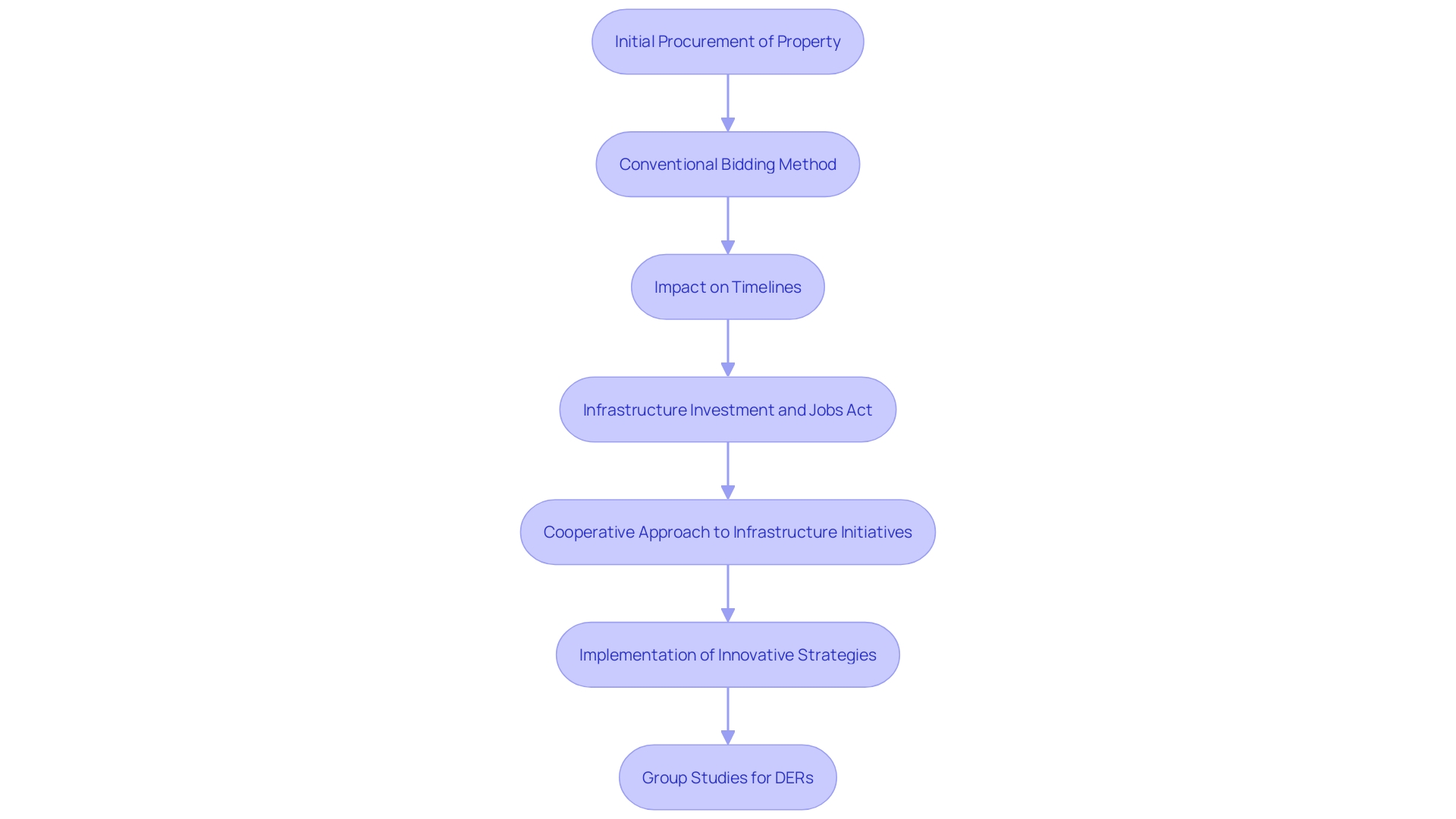
Types of Land Rights in Infrastructure Projects
Infrastructure projects necessitate a variety of property rights, including easements, leases, and fee simple ownership, each carrying unique implications for project execution and owner relations. Easements, for example, permit certain uses of property without transferring ownership, which can be essential for installing utilities or pipelines without disrupting the owner's primary use. Leases provide temporary access, often used for construction staging areas or temporary facilities, ensuring minimal long-term impact on the landowner’s rights. Fee simple ownership, on the other hand, offers complete control over the property, essential for permanent infrastructure installations like power plants or substations.
Understanding these distinctions is crucial for property acquisition experts to navigate the intricate legal landscape effectively. 'As Andrew's group has demonstrated through their efforts with the Southern Ute Indian Tribe, interacting with stakeholders to grasp their viewpoints can offer significant insights into usage priorities and possible legal obstacles.'. This collaborative approach helps bridge the gap between project requirements and landowner interests, ensuring smoother negotiations and more successful project outcomes.
Furthermore, converting qualitative insights into quantitative models, as Daniel's team has accomplished, can demonstrate the effects of various usage strategies on future energy generation and revenues. This data-driven approach not only supports informed decision-making but also aligns with the priorities of landowners, such as the Native Nations, who seek to balance development with cultural and environmental preservation.
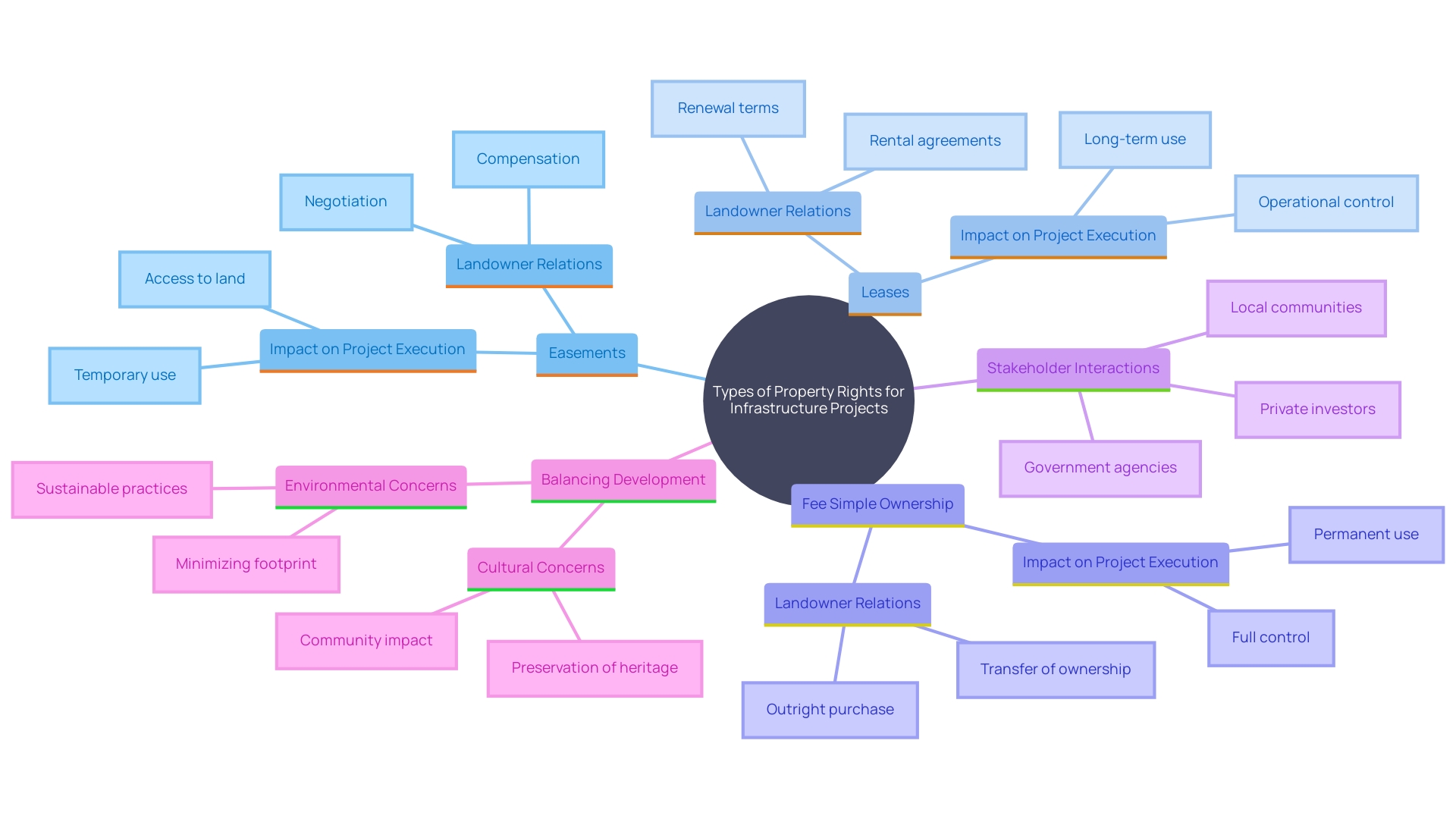
Strategies for Successful Negotiation in Land Acquisition
Achieving successful negotiation in property acquisition hinges on thorough preparation, transparency, and building solid relationships. Engaging with landowners early is essential for establishing trust and addressing any concerns they may have. Clear communication and fair compensation are fundamental strategies that pave the way for mutually beneficial agreements.
Experts emphasize the importance of adapting negotiation tactics based on stakeholder responses. As Al-Mashat advises, understanding mutual priorities and finding common ground are crucial. By aligning goals, both parties can ensure a more collaborative and less contentious negotiation process.
The LAND-at-scale program, funded by the Netherlands Ministry of Foreign Affairs, underscores the significance of fair and just tenure security. This initiative aims to promote sustainable use of resources, reduce conflicts, and support innovative interventions. Such programs highlight the broader implications of successful negotiation, contributing not only to project success but also to societal and environmental benefits.
Case studies show that practical implications, such as territorial consolidation for Indigenous areas, can safeguard against illegal activities and align with cultural worldviews. This method highlights the importance of combining traditional knowledge and modern negotiation strategies to achieve comprehensive governance solutions.
Moreover, the upcoming workshop in Kautokeino, Norway, will empower Indigenous youth by enhancing their negotiation skills. Interactive sessions will provide insights into effective communication, consensus-building, and conflict resolution, further illustrating the importance of skillful negotiation in diverse contexts.
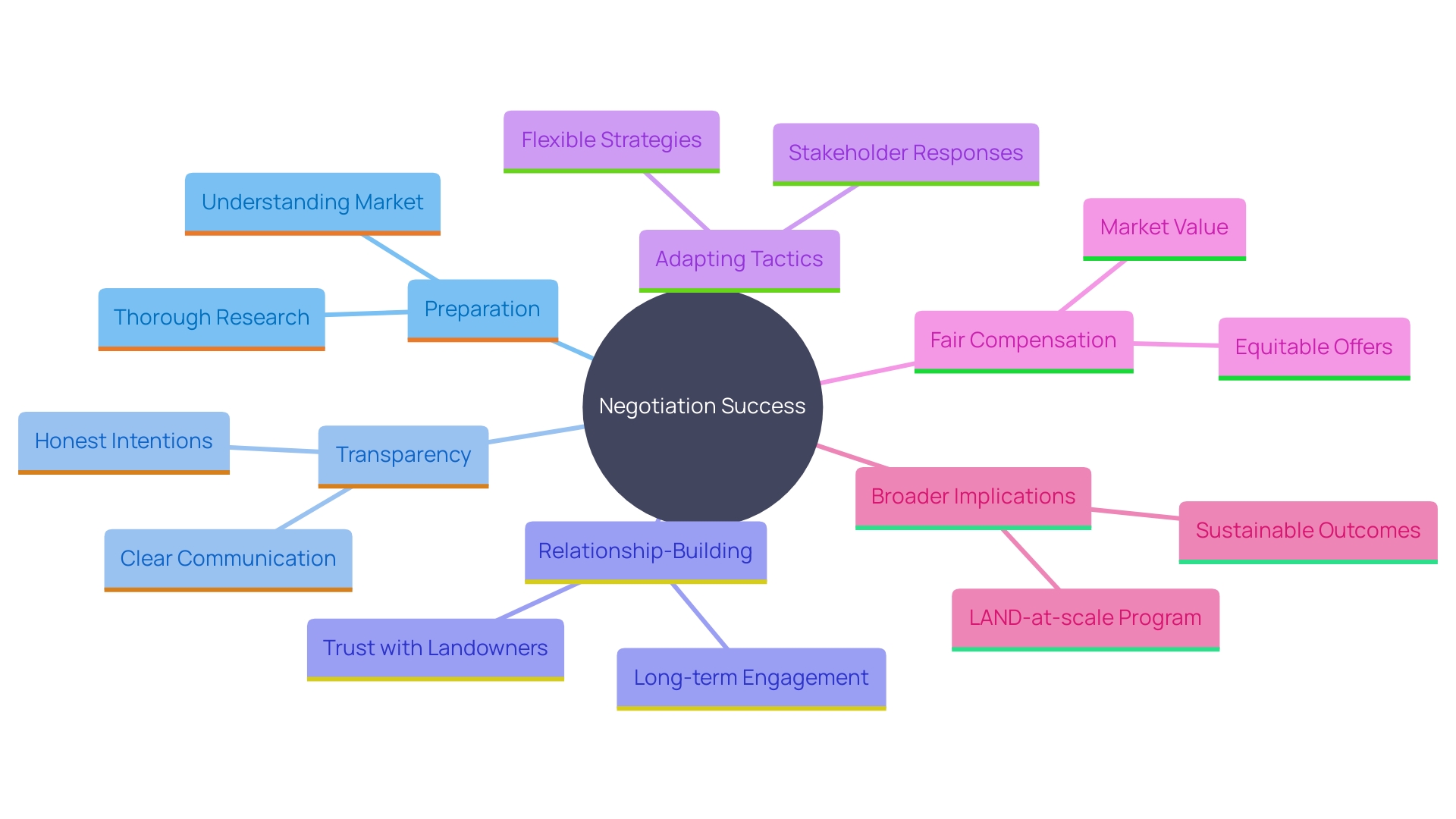
Innovative Approaches to Land Acquisition
Creative methods for property acquisition can simplify the process and reduce opposition from property owners. Methods like employing technology for data examination and visualization can greatly improve the comprehension of property values and potential effects. For instance, Acres has become a market leader by leveraging sales data, property valuation, mapping, and research, which empowers real estate professionals with critical tools for decision-making.
Collaborative approaches that include community input and stakeholder engagement can also lead to more acceptable solutions, reducing opposition and fostering goodwill. 'The AREA-at-scale program, funded by the Netherlands Ministry of Foreign Affairs, exemplifies this by focusing on fair and just tenure security and access to territory and natural resources.'. 'This initiative not only addresses governance issues related to territory but also integrates climate resilience, ensuring sustainable and efficient use of resources.'.
Moreover, inclusive territory governance was highlighted during a thought-provoking webinar at #COP28, where key change-makers discussed the intricate relationship between territory governance and climate resilience. By engaging local authorities, benefactors, professionals, and scholars, the event highlighted the significance of inclusive methods and provided valuable insights into resource management and climate resilience.
Overall, these innovative and collaborative strategies in property procurement can significantly mitigate conflicts and support sustainable development, making the property procurement process more efficient and equitable.
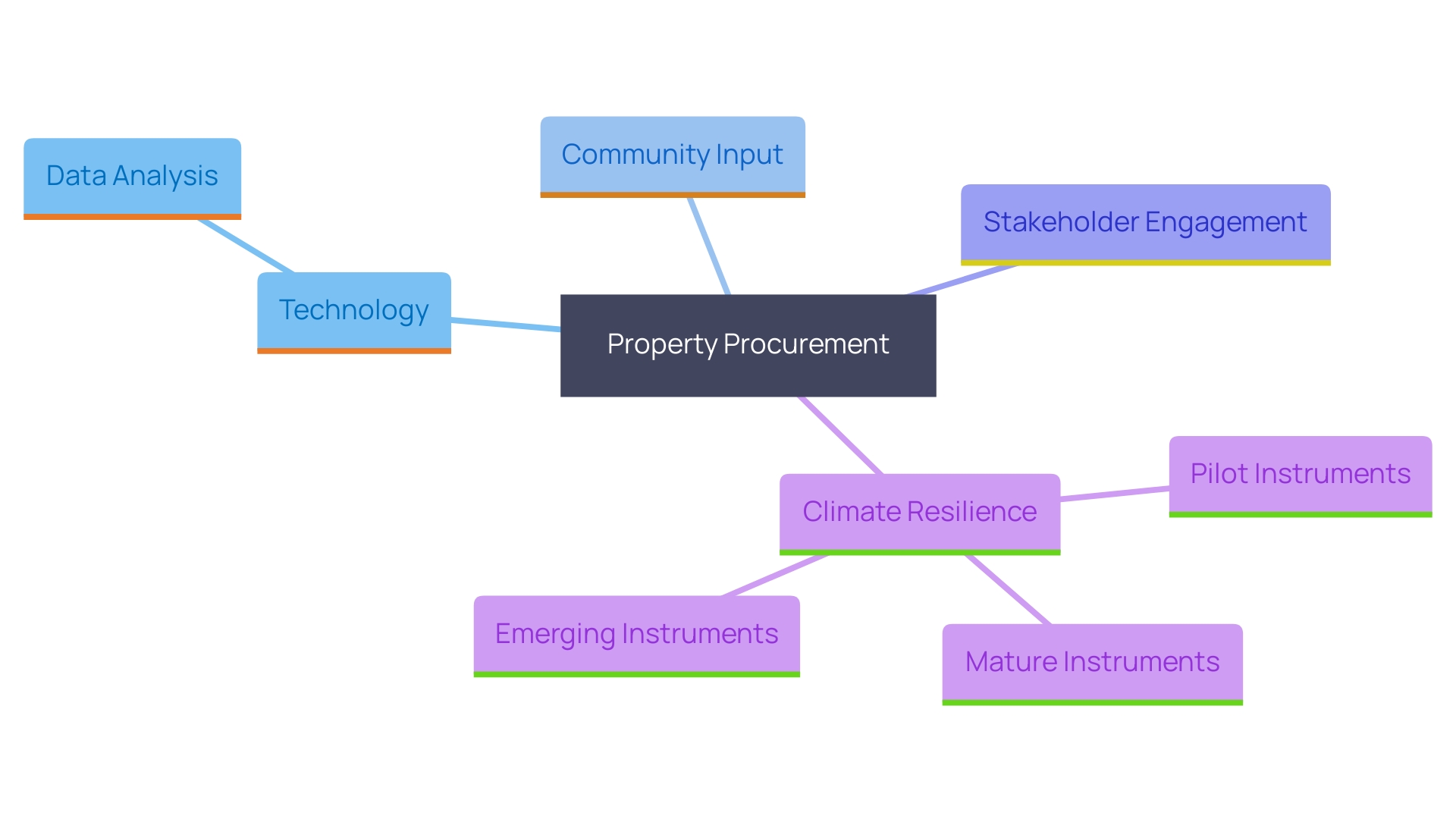
Collaborative Community Engagement and Stakeholder Consultation
'Interacting with the community and stakeholders is essential to the success of land acquisition initiatives.'. Effective engagement involves a structured approach, encompassing stakeholder identification, mapping, and active involvement. This methodology ensures that the concerns and aspirations of the community are well understood and addressed.
For instance, the SEI initiative in Khon Kaen, Thailand, utilized extensive interviews with various stakeholders, including community leaders and local workers, to capture their perspectives on urban development and its impact on their livelihoods. Such inclusive practices not only promote mutual understanding but also allow leaders to foresee and address potential issues early on.
Additionally, tools like MapStakes have proven effective in enhancing stakeholder representation in smart city planning by providing insights into the stakeholders most affected by and affecting the developments. This approach is critical for creating a collaborative environment where all voices are heard, and solutions are co-created, benefiting both the project and the community at large.
By embracing these methods, property procurement experts can guarantee a more open and inclusive approach, resulting in sustainable and socially fair results.
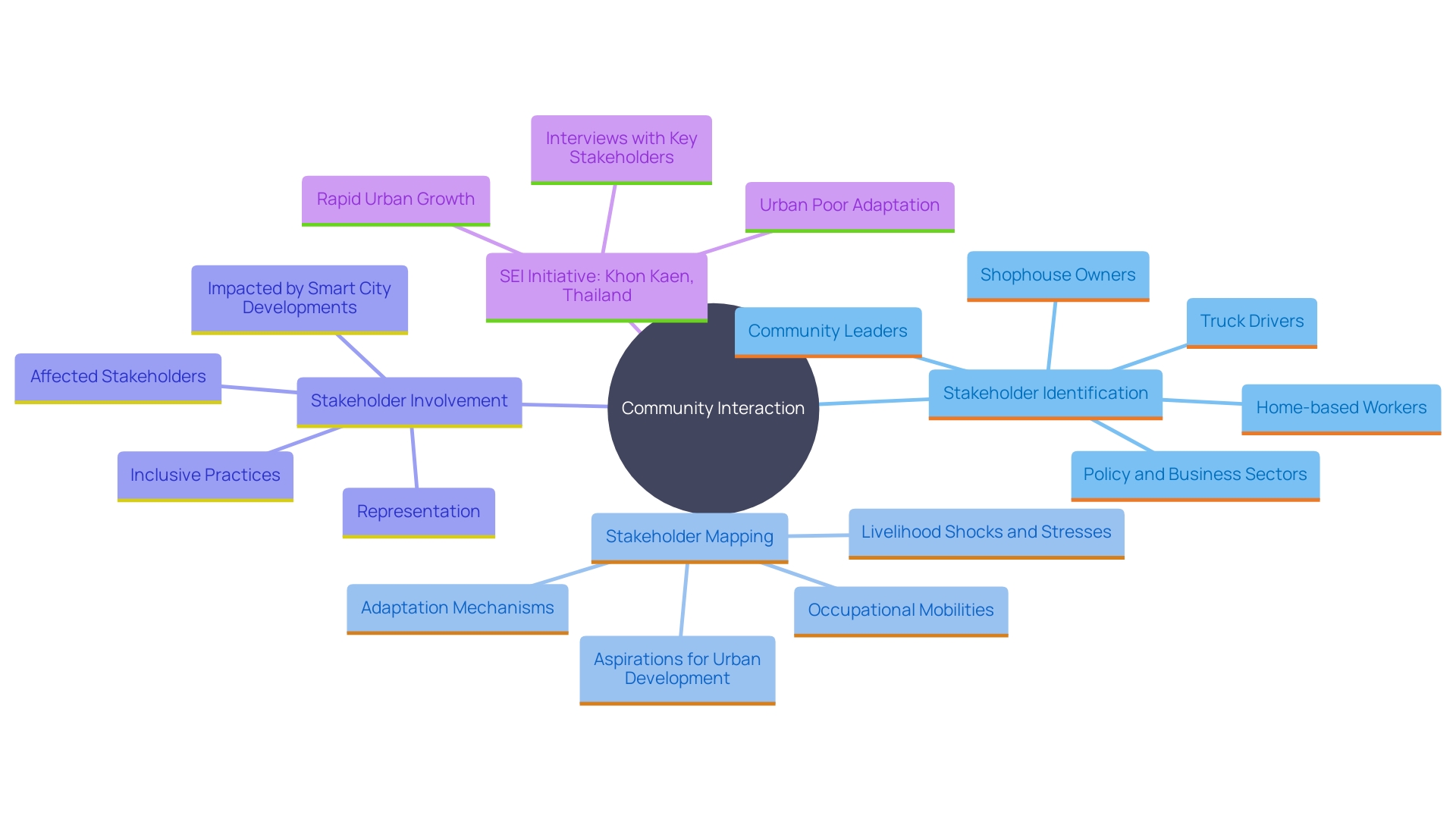
Leveraging Technology for Efficient Land Acquisition
'Incorporating technology into property acquisition methods, particularly through Geographic Information Systems (GIS) mapping and Artificial Intelligence (AI)-driven data analysis, greatly enhances efficiency and accuracy.'. These advanced tools provide dynamic visualization of property parcels, simplify the intricate task of title research, and accelerate decision-making activities. For instance, Ai's ability to handle large data sets enables rapid identification of environmental changes and urban expansion, similar to how Copernicus employs AI to process its vast satellite data. By leveraging these technologies, land acquisition professionals can deliver precise and timely information, promoting effective project execution. This approach not only addresses immediate operational needs but also aligns with broader environmental goals, as evidenced by initiatives like the Landscape Assessment report by Columbia University and partners, which seeks to harness AI for scalable climate and nature solutions.
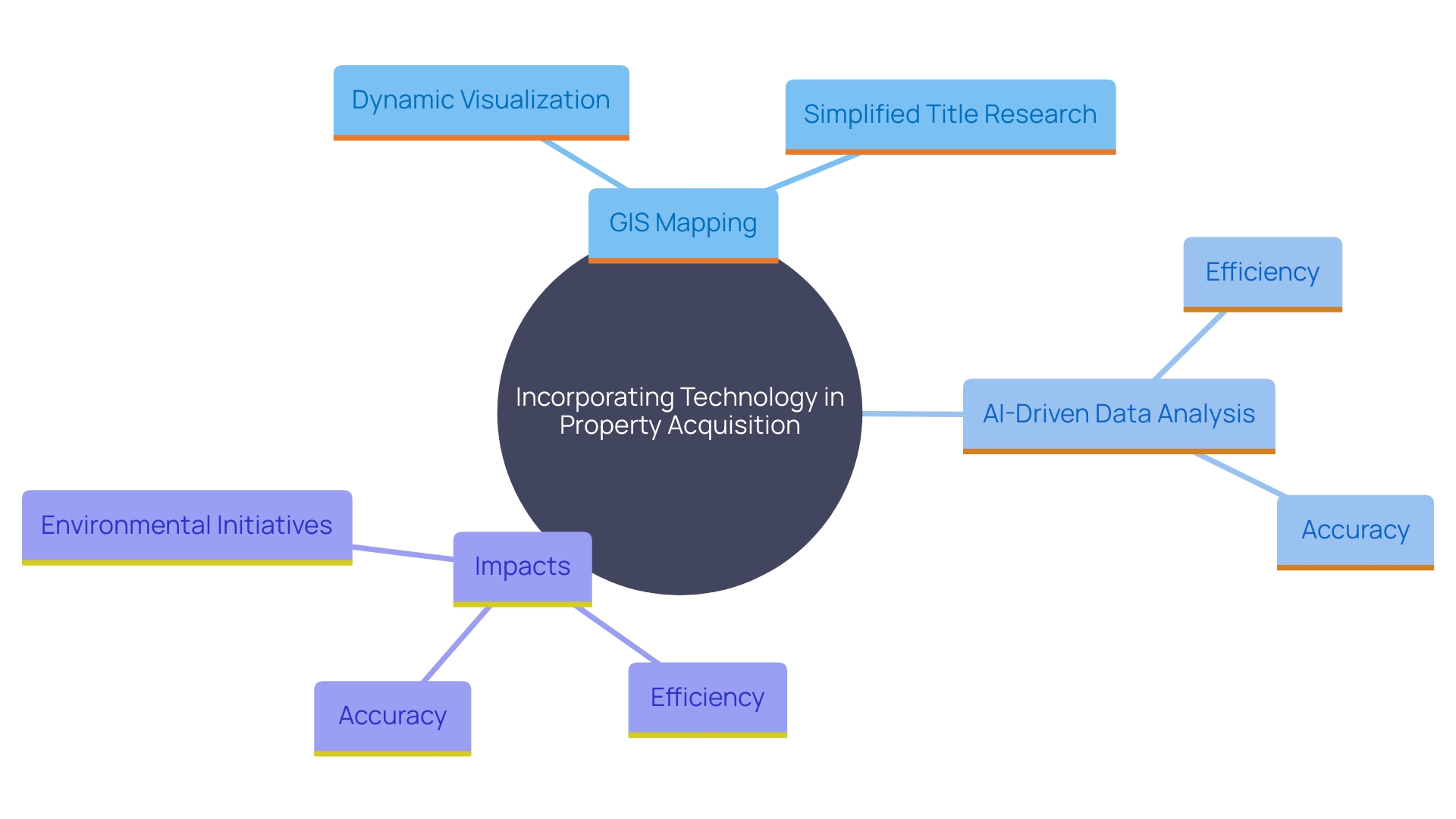
Conclusion
Right-of-way acquisition is an essential aspect of infrastructure development, playing a pivotal role in ensuring timely project execution and minimizing costs. The importance of proactive and innovative strategies cannot be overstated, especially as infrastructure demands are projected to surge significantly by 2030. By adopting early acquisition practices and leveraging group studies for distributed energy resources, stakeholders can effectively navigate the complexities of land acquisition, thereby reducing delays and enhancing project outcomes.
Understanding the various types of land rights—such as easements, leases, and fee simple ownership—is crucial for successful negotiations. Engaging with landowners collaboratively and transparently fosters trust, leading to mutually beneficial agreements. Additionally, innovative approaches, including the use of technology for data analysis and stakeholder engagement, can significantly streamline the acquisition process while promoting sustainable land use and community involvement.
The integration of technology, such as GIS mapping and AI, further enhances the efficiency of land acquisition efforts. These advanced tools facilitate precise decision-making and support broader environmental goals. By embracing a holistic and collaborative approach, as highlighted by initiatives like the LAND-at-scale program, stakeholders can ensure that land acquisition processes are not only effective but also equitable and socially responsible.
In conclusion, the future of infrastructure development hinges on efficient right-of-way acquisition practices. By prioritizing early engagement, utilizing innovative strategies, and fostering community collaboration, stakeholders can navigate the challenges of land acquisition, ultimately delivering essential services and infrastructure that meet the needs of society.




